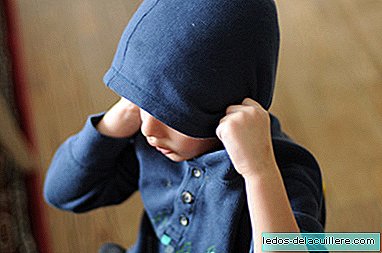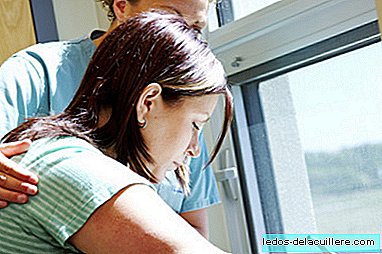
We load the bag with towels, lunch, water, protective cream ... and cool off! It's summery, the pools fill up and we want to enjoy a safe swim in the pool with the children. We will have a good time following these recommendations.
In the first place, it is necessary that we continuously monitor children, because their safety depends on us. They may know more or less rules (below we tell you what these rules are), but they can always be forgotten or they can act suffering some danger that goes unnoticed, and for that they have us.
Therefore, we cannot allow the care of children (much less babies) to fall on other children even if they are older. It is our responsibility to finish the pool day happy, and it is also a perfect time to spend in the company of children and not watching from a distance. We will get less scares and end up less tired.
In addition, remember that the lifeguard's mission is rescue and water rescue when necessary, but the surveillance of minors is a responsibility of the father, mother or guardian. Therefore we cannot delegate to the lifeguard, who may have dozens of people in the water ...
The attention on the little ones should be put both when they are in the water and when they play near it. Further, drowning occurs quickly and silently, and in cases with victims it is usually a few minutes, who knows if seconds, of "misleading".
And that dismissal or that lowering the guard usually occurs more frequently in known environments, but remember that most cases of drowning and injuries occur in the family environment, in bathtubs, inflatable pools or private pools, as we will see below.
Children who do not know how to swim or float (or are small, or just learned to swim ...) must wear life jackets, in the water and if they play near the pool. We remember that floats and sleeves have their risks and are less safe than a vest.
Attention also to other dangerous water toys, such as those floats where the legs are introduced through holes, or water guns ...
In the case of babies, they are especially helpless and keep in mind that a baby can drown in just a few centimeters deep, so they can't be alone for a moment or even in the smallest pool. You have to always be with them.
One last tip, although we hope we don't have to use it. Survival in an "almost drowning" depends on the speed of rescue and the time it takes to restore breathing. Therefore, it is convenient for parents to have notions of first aid and cardiopulmonary resuscitation. Remember the behavior to follow when any accident occurs: PAS: protect, act and help.

Swimming pools at home
If we have a private pool at home or in an urbanization, it is necessary that you have the necessary security systems to prevent children from accessing it without supervision. The complete fencing of the pool, with a security door and sufficient height so that a child can not jump or climb.
There are also alarms that warn if a body falls into the water, but we can not leave a device that could fail, disconnect ...
If what we have used is the inflatable pool, it must be emptied immediately after use and not left with water. Remember that these types of swimming pools also carry risks, and every year there are deaths of children under five in inflatable pools that are at home, on terraces, the garden ...
In the public pools you can not drink, but attention if you have consumed alcohol, because adults relax vigilance.
Safe behavior of the child bathe
We have already done everything we can "from the outside", we have secured the pool, we are watching the children and with them ... but what should they know about how to behave in the pool?
If we were to "educate" children with a basic safety guide, these would be the essential points to know. It is not about studying them but talking about them at home and on the way to the pool, but above all to remember them when we are there with them. Safety regulations are essential to avoid risk behaviors.
- Never enter the pool when it is closed or without the surveillance of the lifeguard and an adult.
- It is very dangerous to run along the edge of the pool due to the risk of slips that could end the child in the water (and the consequent risk of drowning) or with injuries from trauma (own and / or damaging others).
- In the pool you have to play without running or pushing or throwing other children into the water, you could hit your head or other body part with the edge of the pool.
- In the water you don't have to play "chokes".
- If the pool is covered with a tarp, you should never try to get in, jump or walk on it, since the child could fall into the water and then not be able to leave.
- It is very dangerous to pull the grilles that cover the drains in the pools because the force of the suction is so great that it can pull a person and trap us in the bottom.
In any case, I repeat that adults are responsible for our children and therefore even if we have talked about these safe behaviors, if they do not comply, we must let them know (in addition, you usually learn “on the ground” with practice) and ensure their safety, that of other bathers and also for respect for others.
We hope now that you pass a great day at the pool with the children following these safety recommendations So everything is perfect. You will really enjoy the refreshing pool this summer ...
Photos | Eva Paris in Babies and more and georgeparrilla in Flickr-CC More information | BOE In Babies and more | Children and aquatic environments: recommendations for summer 2013, Enjoy water and avoid risks: guide for families,












